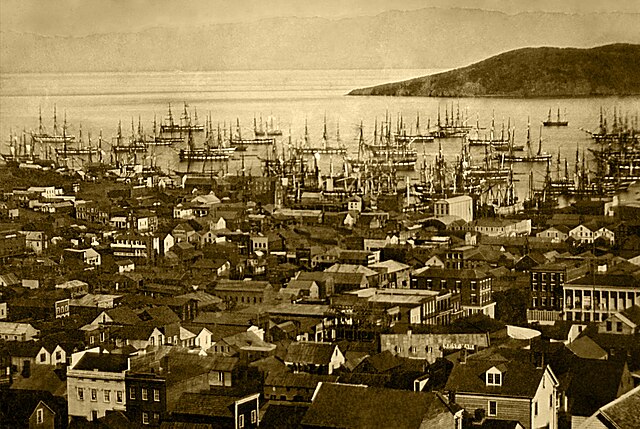A boomtown is a community that undergoes sudden and rapid population and economic growth, or that is started from scratch. The growth is normally attributed to the nearby discovery of a precious resource such as gold, silver, or oil, although the term can also be applied to communities growing very rapidly for different reasons, such as a proximity to a major metropolitan area, huge construction project, or attractive climate.
Ornamental oil derricks in Kilgore, Texas, United States
Trieste, Italy, from the opening of the free port, a boomtown of Central Europe in the northernmost part of the Adriatic.
California attracted tens of thousands of gold prospectors during the Gold Rush of 1849.
"Canvas Town" – South Melbourne, Victoria. Temporary accommodation for the thousands who poured into Melbourne each week in the early 1850s during the Victorian gold rush.
The California gold rush (1848–1855) was a gold rush that began on January 24, 1848, when gold was found by James W. Marshall at Sutter's Mill in Coloma, California. The news of gold brought approximately 300,000 people to California from the rest of the United States and abroad. The sudden influx of gold into the money supply reinvigorated the American economy; the sudden population increase allowed California to go rapidly to statehood in the Compromise of 1850. The Gold Rush had severe effects on Native Californians and accelerated the Native American population's decline from disease, starvation, and the California genocide.
Prospectors working California gold placer deposits in 1850
1855 illustration of James W. Marshall, discoverer of gold at Sutter's Mill
Advertisement about sailing to California, c. 1850
Merchant ships fill San Francisco Bay, 1850–51







